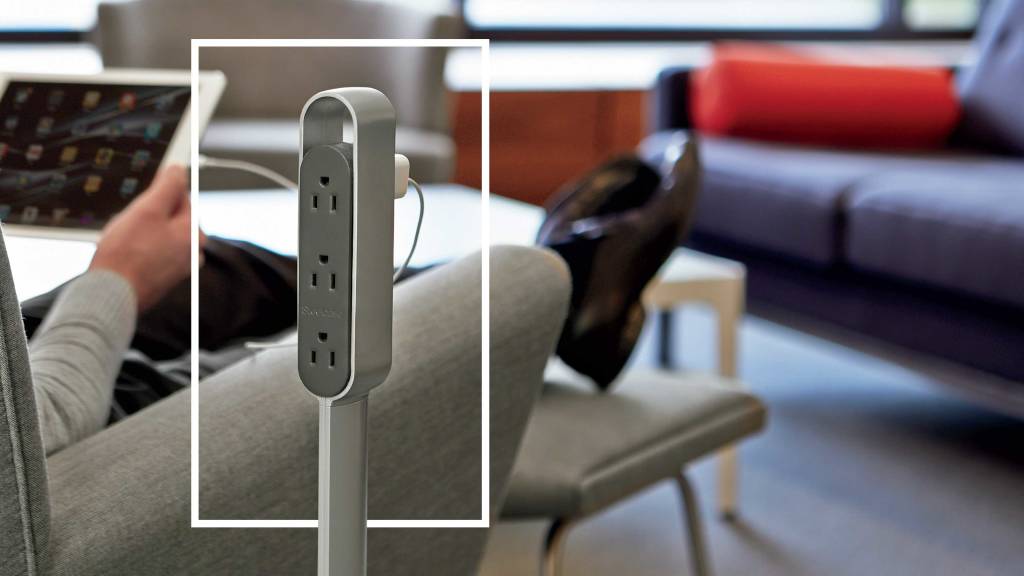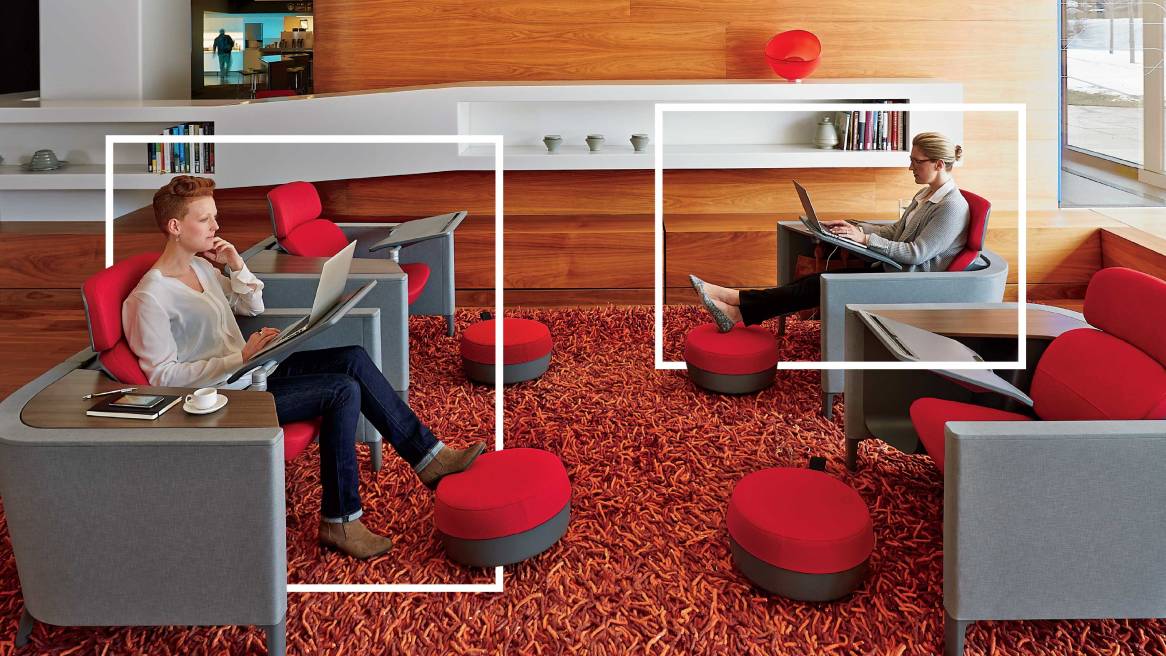Designing for Distraction
Solutions to help people manage attention
By James Ludwig
Vice President, Global Design, Steelcase
Design is about solving problems. And we know that one of the biggest problems workers face today is distraction.
Human beings yearn to be in a state of flow, where we are so fully immersed and energized by what we are doing, that we actually experience a sense of pleasure—even joy—in the task at hand. Yet the tension we all face as humans is that we are easily distracted.
Some of the distractions we face are innate. Just as we crave flow, we’re also hardwired to seek out what is novel and new. We are drawn to voices in a crowd and motion in our peripheral vision. It’s almost irresistible. Our emotions can motivate and propel us, yet we worry and stress when we feel a diminished sense of control over our environment. Sometimes the greatest distraction we face is the inner workings of our own minds.
The environments in which we work and learn are also full with distractions: too much information, people surrounding us, noise, discomfort. Some of the stimuli that add life and energy to an environment in one context, can feel overwhelming in another.

Vice President Global Design, Steelcase
As designers it’s our job to create environments that mitigate these distractions and that enable and inspire people to do and be their best. The products we make are not solely a question of taste. They are based on tangible insights. We observe explicit, emerging and latent needs. We solve for them and express those solutions through appropriate means true to a relevant and consistent design vocabulary.
To be human is to be distracted. Yet we yearn to harness our energy and find purpose and meaning in our work and learning.
This paradox is at the core of our human experience. The following pages offer a glimpse into our process and our journey as designers to help resolve this fundamental tension.
Brody Worklounge
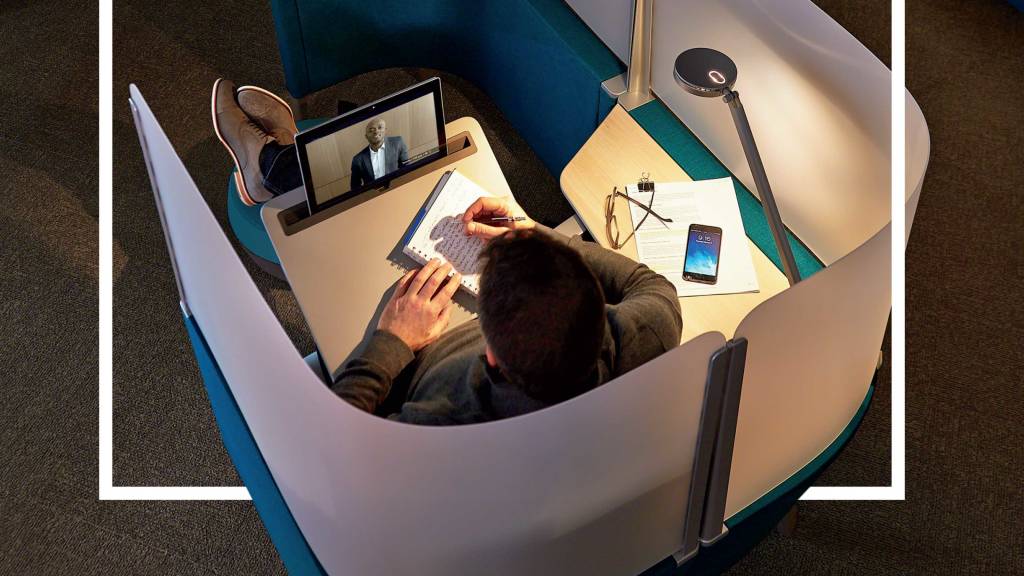
Our early ancestors’ peripheral vision developed to be extremely acute so they could detect motion from potential predators. It’s no wonder why in our workplaces and campuses today, we almost can’t help ourselves from glancing up when we see someone walk by in our peripheral vision. Brody™, a high-performance worklounge, was envisioned as a microenvironment that addresses this primal human response and encourages focus, concentration and flow.
“Design is a highly-iterative process. I like to start with the sketch. It clarifies our thinking and it’s the quickest way to visualize an idea. Through drawing we can verify what we want to build.”
Markus McKennaDesign Director, Steelcase Education
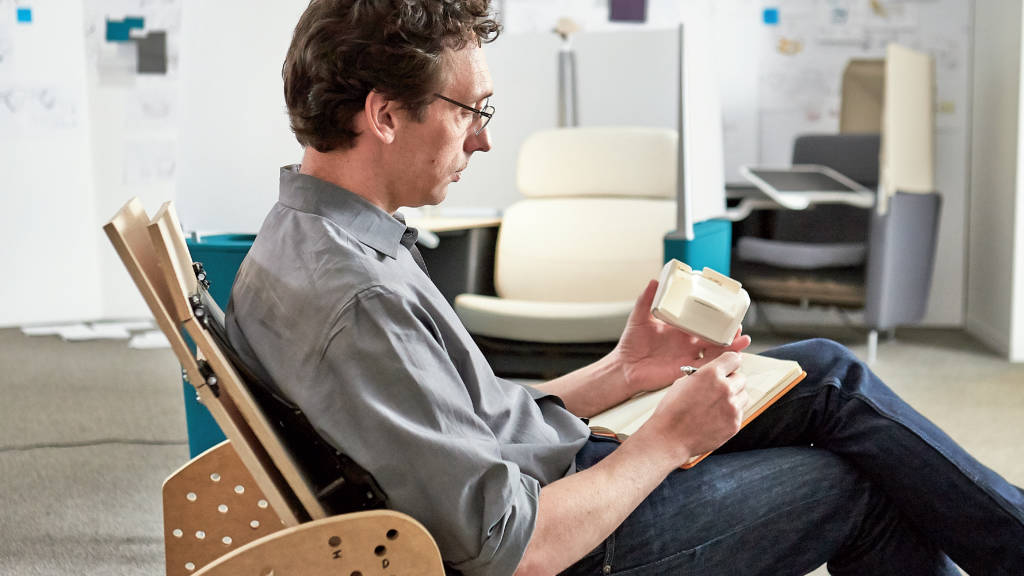
Director, Steelcase Education
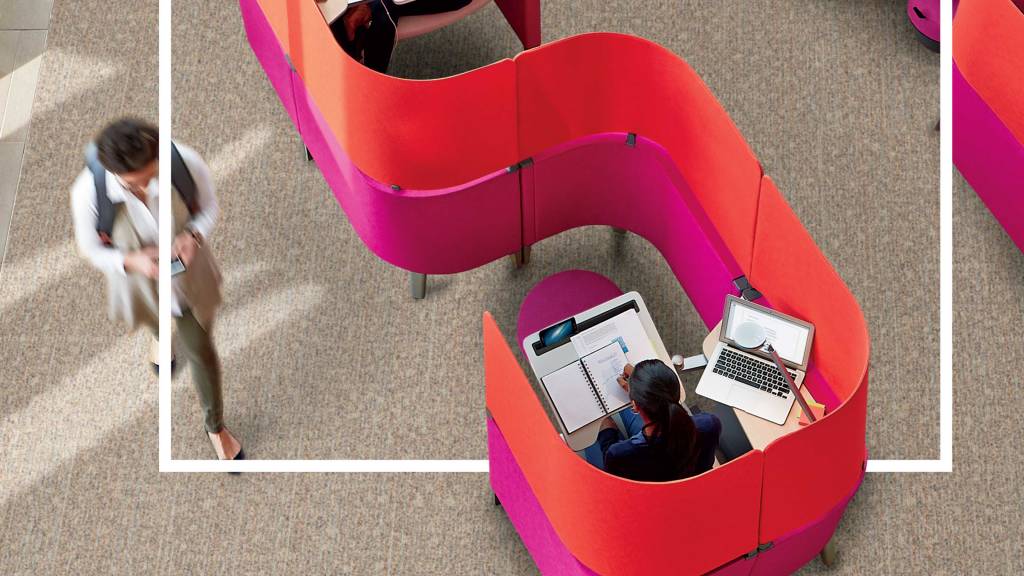
General Manager, Steelcase Education
Typical lounge furniture can get uncomfortable quickly—it’s not designed for working on laptops or mobile devices, and we end up hunched over to see our screens, with sore necks and shoulders. The design team solved for this by creating an “alert recline” seating angle, so people can be in a lounge position, yet able to comfortably see and reach their work, with a moveable surface that brings devices up to eye level.

“3D modelling is one of the many tools we use to validate ideas. The key is to move quickly but in many small steps. Once we get to the prototype stage we test them on ourselves and we can quickly tell if something is going to work. Then the challenge becomes how do we deliver it in a cost-effective manner to our customers.”
Markus McKenna Design Director, Steelcase Education
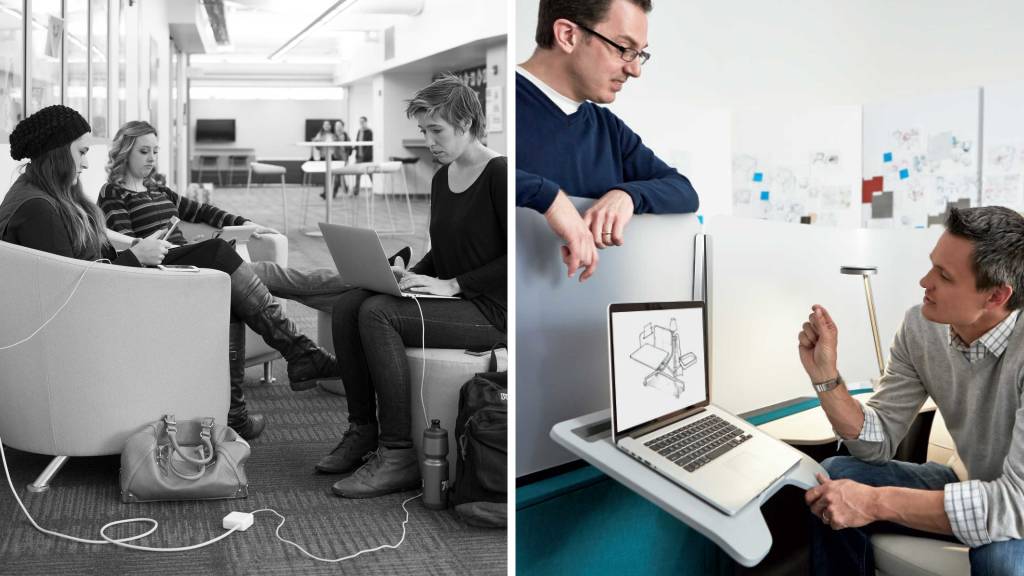
Product Manager, Steelcase Education

It’s the little, but pragmatic, design details that delight people—and limit internal distractions. Like having a place to store your bag in easy reach so it’s not getting tangled up on the floor. And easily accessible power so you don’t have to worry about running down your battery. Even a fully adjustable light helps you keep focus.
THREAD POWER DISTRIBUTION SYSTEM
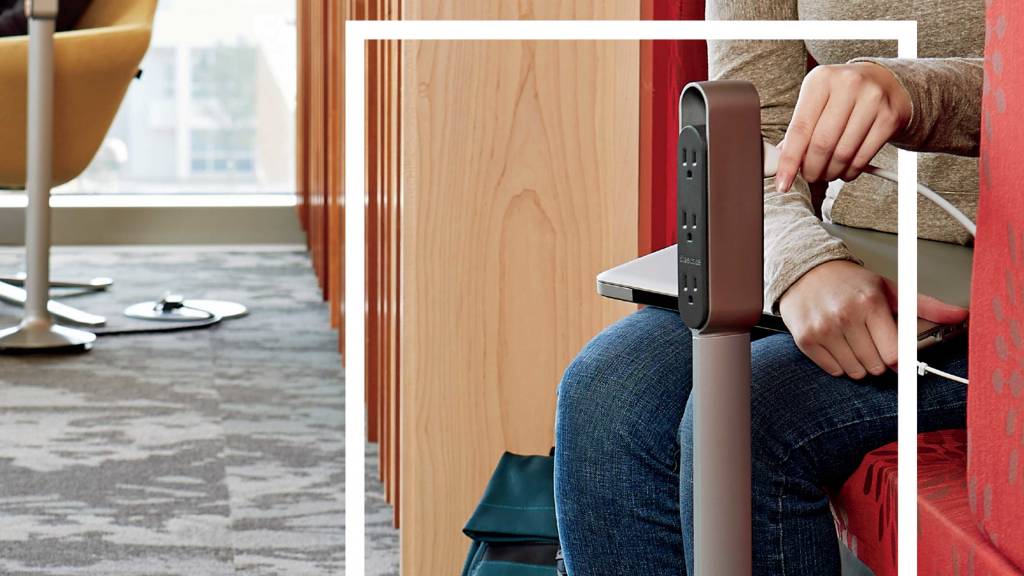
Understanding that the search for power is a major distraction, a small design team took on the challenge to develop a power distribution solution that is simple to use, easy to move, virtually disappears under carpet and is cost-effective. The result: Thread™, an ultra-thin, U.L.-approved power distribution system that can reach places where power outlets are maddeningly absent.
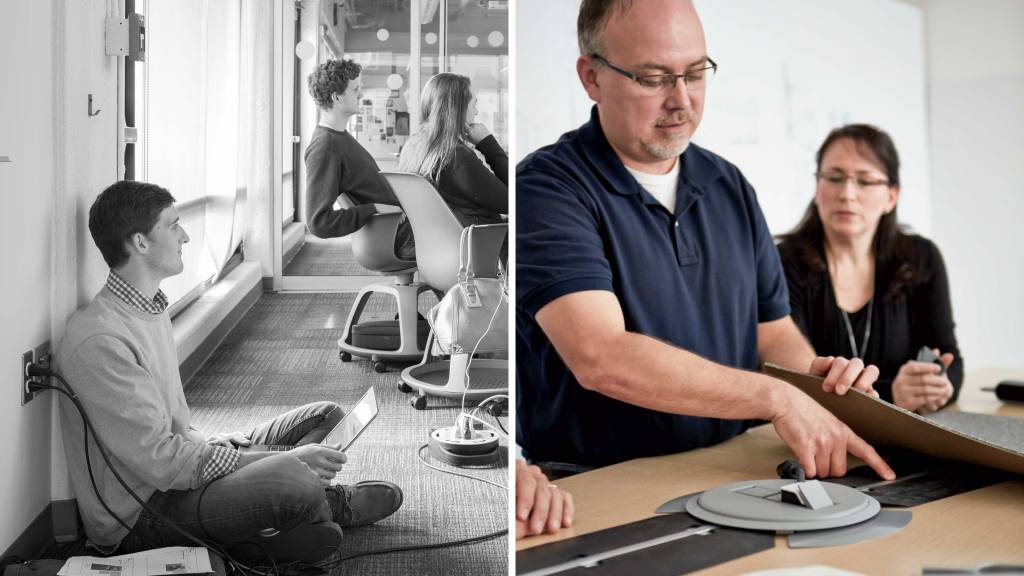
Steelcase researchers observed students and workers sacrificing comfort and control for the needs of their devices. Classrooms, tethered to perimeter power, create a web of extension cords.
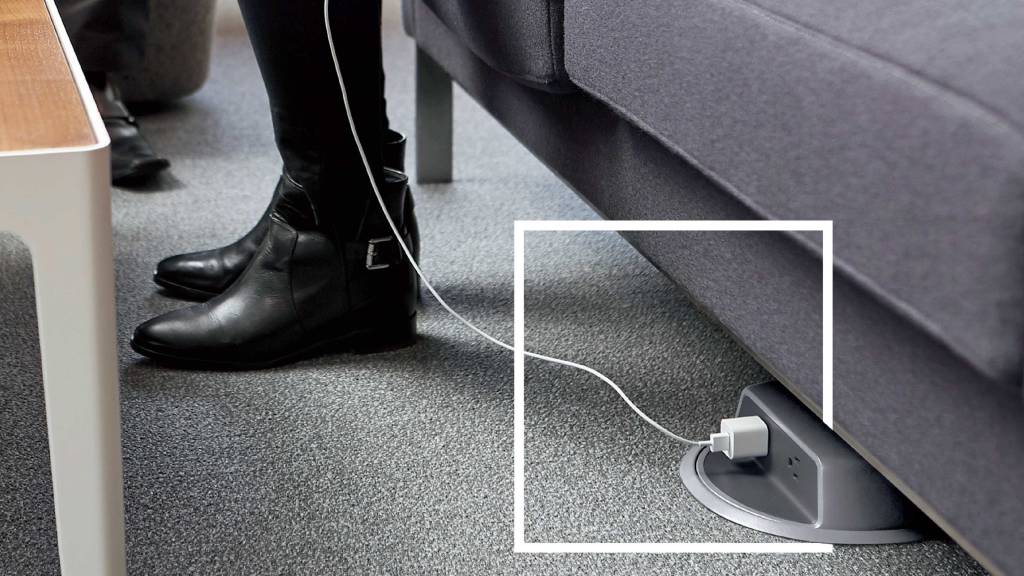
“Thread brings power to a lot of typically powerless places and opens up new possibilities for people, helping them to stay focused on what they need to accomplish and stop worrying about their dwindling battery. It eliminates another distraction and that’s good for everyone.”
Sean CorcorranGeneral Manager, Steelcase Education
